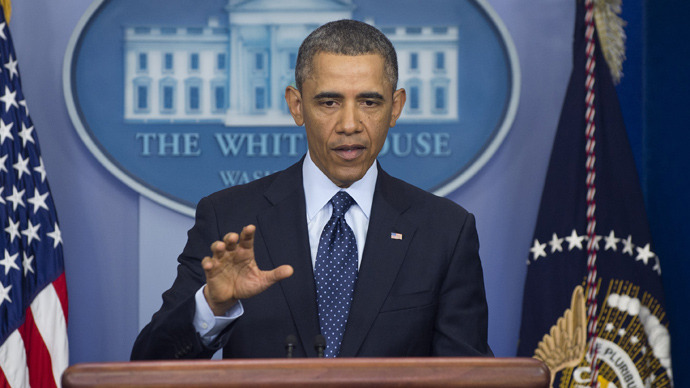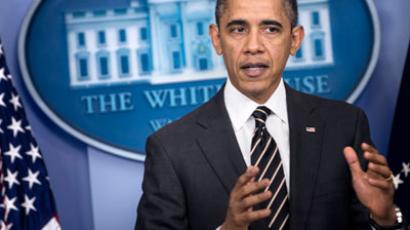Obama signs sequester bill

Austerity has hit the United States as President Barack Obama signed into law a directive ushering in significant cuts to federal agencies' budgets and triggering the sequester that has been debated in Washington during the last several weeks.
In the White House on Friday, President Obama inked his name to the order, and with it signed off on automatic budget cuts that the country's political class say will save the United States over $1 trillion over the course of the next decade. In doing so, though, $85 billion will be erased from this year’s budget and a number of government departments will see their funding slashed immediately.
Through the sequester deal, roughly half of all cuts will be imposed on the Pentagon, drastically reducing funding for America’s defense. While uniformed personnel are protected from the directive, civilian employees and contractors across the world will be faced with layoffs and furloughs. The Department of Defense has already published a plan explaining who exactly will be impacted, and at its worst it could mean roughly $500 billion dollars cut from the Pentagon during the next decade.
The second half of all cuts triggered by the sequester will be implemented on domestic non-military spending. While crucially important programs like Social Security are exempt from the changes, practically all federal departments and agencies will face some degree of slashed funding. The Departments of Education, Agriculture and dozens of other agencies will see serious changes during the coming days, weeks, months and years. Many have already announced that the order will bring dire consequences. The Department of Transportation, for example, has warned that budget cuts might affect its ability to control air traffic; cuts to the Department of Homeland Security will mean longer lines at international borders and airports due to personnel layoffs. Rollbacks on education are expected to cause as many as 40,000 jobs to disappear nationwide, and more than half of a million women and children across the US will no longer have access to food aid due to reductions in the Women, Infants and Children program.
With the sequester deal essentially effecting each sector and every US resident alike, lawmakers in Washington have hoped to find another solution for solving the country’s ever-increasing economic woes. During an address from the White House Friday morning, though, Obama blamed Congress for not being able to prevent the cuts.
“What I can’t do is force Congress to do the right thing,” said the president. “The American people may have the capacity to do that, but in the absence of a decision on the part of the speaker of the House and others . . . we are going to have these cuts in place.”
The Obama administration has come under fire as of late for blaming the sequester deal on House Republicans. “The sequester is not something that I've proposed. It is something that Congress has proposed,” the president said last year. By some reports, though, the budget cuts were brought to the table by White House officials during the president’s first term in office. A bipartisan commission chaired by former Sen. Alan Simpson (R-Wyoming) and former Clinton White House Chief of Staff Erskine Bowles offered a way to cut America’s ever-growing deficit. Under this proposal, Congress and the president would have to both raise taxes and cut spending across the board. Knowing that neither party was willing to agree on these measures, lawmakers and Obama agreed on a law that would trigger automatic cuts beginning March 1, 2013, unless a deal could not otherwise be reached. Back then, it was seen as a sword of Damocles that would prompt action from either party.
“Nobody who ‘agreed’ to sequestration actually wanted it to happen,” reports Molly Ball of The Atlantic. “The supercommittee was supposed to forge the deal that Obama and House Speaker John Boehner could not in their July 2011 debt-ceiling talks. It was this hypothetical future deficit reduction that got Republicans, grudgingly, to agree to raise the debt limit,” she says.
As time passed, though, the lawmakers that agreed to make the sequester an option stopped searching for other solutions. A failure to find a compromise between lawmakers on the Hill left the spending cuts scheduled for March 1 inevitable, and as the clock wound down on Friday the only option left was to slash the budget.
“In the end, nobody could agree, and nobody took the deadline very seriously anyway,” adds Ball.
While the sequester officially starts today following President Obama’s signature on the directive, most government agencies won’t feel the pinch until later in the year. Many departments have already published their plans for handling the crisis, including outlines of how spending will be conducted during the coming months. But with funds drying up quickly and a further deal reversing the sequestering uncertain, the impact of the cuts are likely to only increase over time.














